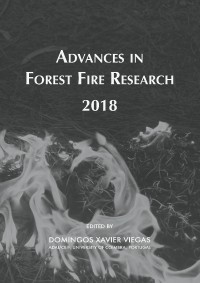Please use this identifier to cite or link to this item:
https://hdl.handle.net/10316.2/44557| Title: | Circulation weather types and their influence on the fire regime in Portugal | Authors: | DaCamara, Carlos C. Trigo, Ricardo M. |
Keywords: | fire regime;fire radiative energy;circulation weather types;fire meteorology | Issue Date: | 2018 | Publisher: | Imprensa da Universidade de Coimbra | Journal: | http://hdl.handle.net/10316.2/44517 | Abstract: | The fire regime in Portugal presents a marked annual cycle that is here characterized based on values of radiant energy released by wildfires as detected by Meteosat geostationary satellites. The role played by meteorological conditions in the fire regime is then analyzed from the point of view of synoptic climatology. For this purpose, we use 10 Lamb circulation weather types (CWTs) that are grouped into 8 directional types, associated to the cardinal and intercardinal directions of the geostrophic flow, and 2 rotational types (cyclonic and anticyclonic), associated to the positive and negative signs of geostrophic vorticity. The study covers the 14-year period from January 2004 to December 2017. The monthly distribution of total fire radiative energy presents large values during the fire season (defined by the months spanning from July to October), with a very strong peak located in August. A secondary peak, located in March, is also clearly visible. The number of fire days (i.e. days where there is a recorded release of fire energy in Portugal) during the fire season represents 56% of the total number of fire days but contributes to 92% of the total Fire Radiative Energy (FRE) released by wildfires. When analyzing the fire season from the point of view of CWTs, results indicate that 61% of the FRE released in 2004-2017 is observed in days characterized by directional types NE and E that just occur in 28% of the fire days. The contrast is especially marked when restricting to the E type that occurs only in 8% of the fire days but contributes to 25% of the energy released. In turn, the dominant anticyclonic type, that occurs in 31% of the fire days, contributes to just 15% of the total FRE. The role played by the different CWTs is also noticeable in March, where fire days represent 36% of all March days and contribute to 2% of the total energy released in 2004-2017. Types E and SE that occur only in 14% of the fire days are responsible for 71% of the total FRE in March and more than half (37%) of this amount is released in days of type SE that are observed only in 5% of the days. The importance of the contribution of NE and E types for the fire regime in Portugal is enhanced when restricting to the days with extreme release of energy. The distribution of daily FRE is long tailed with 5% of the extreme fire days (113 days) accounting for 69% of the total FRE. A very large proportion (96%) of these extreme days took place in the fire season, namely in August (62%), July (20%), September (9%) and October (6%). Almost two thirds (66%) of the released energy by extreme events are associated to directional types NE (36%) and E (30%). | URI: | https://hdl.handle.net/10316.2/44557 | ISBN: | 978-989-26-16-506 (PDF) | DOI: | 10.14195/978-989-26-16-506_40 | Rights: | open access |
| Appears in Collections: | Advances in forest fire research 2018 |
Files in This Item:
| File | Description | Size | Format | |
|---|---|---|---|---|
| circulation_weather_types_and_their_influence.pdf | 962.18 kB | Adobe PDF |  |
Items in DSpace are protected by copyright, with all rights reserved, unless otherwise indicated.
